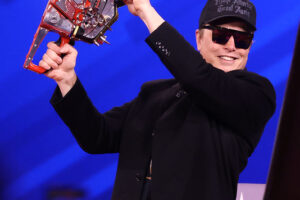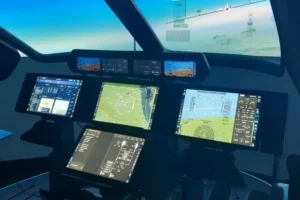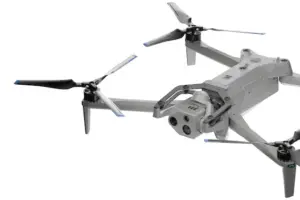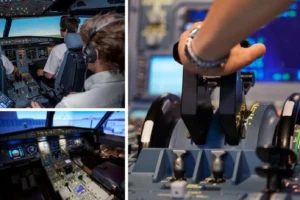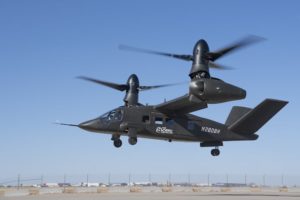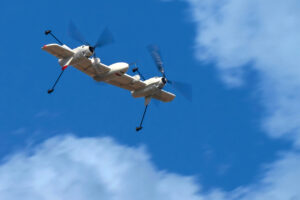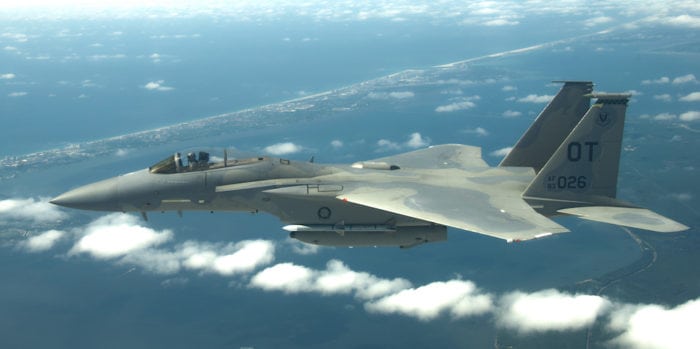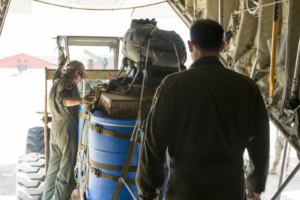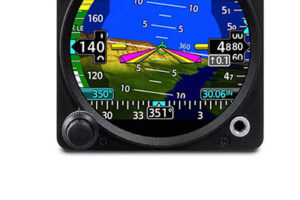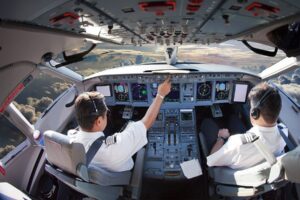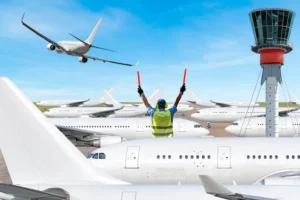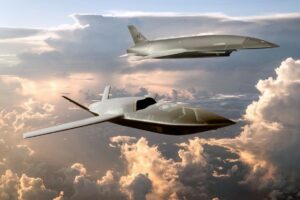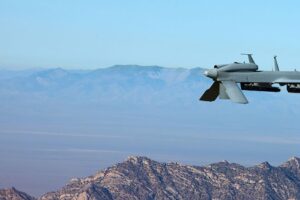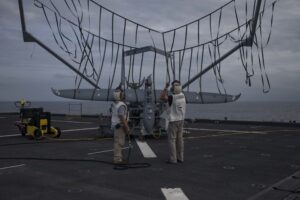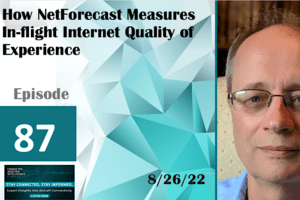The Unmanned Future at Rockwell Collins’ Advanced Technology Center
By Nick Zazulia | November 1, 2018
Send Feedback | @NickZazulia
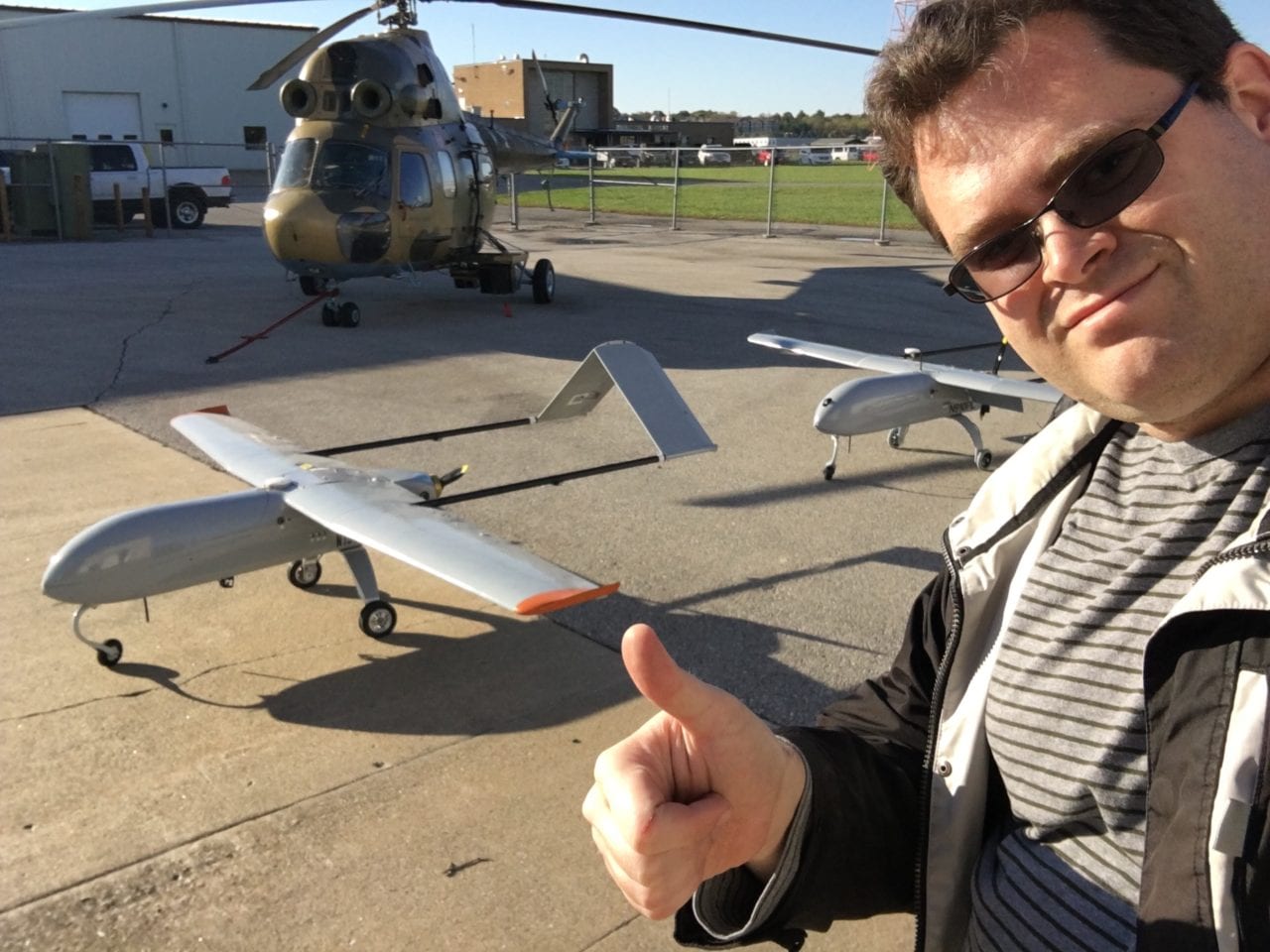
Brian Wolford with two Ferox UAS and the MI-2 at the University of Iowa. Photo, courtesy of Rockwell Collins
Brian Wolford would sit awake as a child and listen to the planes fly into and out of the nearby Pewaukee Municipal Airport — since renamed Chicago Executive Airport. The noise might have bothered his parents, but it let his mind wander to the aircraft he found so fascinating.
Years later, Wolford is now a senior research engineer at Rockwell Collins’ Advanced Technology Center. He works on unmanned aircraft and machine learning for the company and said he still harbors the love of flight that was nurtured at a young age when he tagged along to terminals and towers with his dispatcher father. Wolford got his bachelor’s degree in computer engineering and a master’s in systems engineering rather than anything aviation-specific, but a return to the skies might have always been in the cards.
Wolford spoke with Avionics International about Rockwell’s efforts in the unmanned space, the future of artificial intelligence and what it’s like to balance his work and home life when AI is pervading society.
What do you do in your role at Rockwell Collins?
I work for the Advanced Technology Center here at Rockwell Collins, which really is about trying to take research from the research community and bring that into the products here at the company. It’s almost really being a bridge between the research and the product. So, I work a lot with our research partners.
I’m down at the University of Iowa a lot working with that research partner. They have a lot of different flight assets from UAVs to helicopters to test fighter jets, and I work with them to develop new technology that we can then bring into the products here at Rockwell Collins. It’s really exciting to be able to create new things that then can be turned into products that we can sell to our customers.
Do any projects that you have worked on stick out to you?
One of the more exciting ones I worked on was the certifiable flight management systems for UAS. That was taking the Pro Line Fusion system and really splitting it apart so that it can be used as a ground control station for a UAV. I really was the chief architect for pulling the system from the commercial realm and pulling it into the UAV arena, taking the lead on software development and the architecture development for that and transitioning it from the research into an actual product.
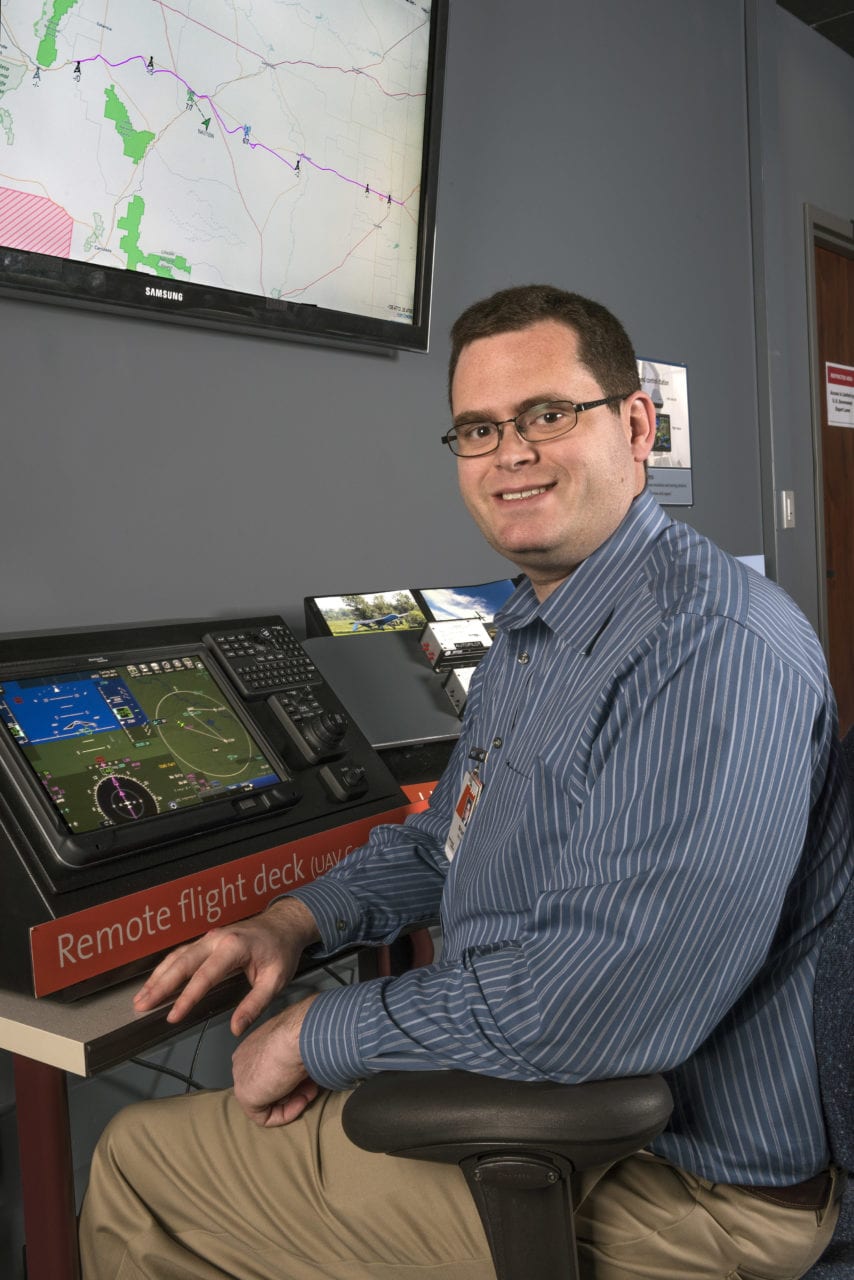
Brian Wolford with the ground demonstration kit that combines the Pro Line Fusion ground control station, Athena 111m and CNPC-1000 radio into an integrated system. (Rockwell Collins)
How did that come about?
For that, it was, “How do you use UAVs within regular, manned airspace?” And, “How do you create new missions and new mission profiles for UAVs?” So without being able to access regular airspace, the UAVs are kind of locked up in either military airspace or predefined airspace volumes. If you can block that, then you can create all sorts of certified and commercial use cases for those UAVs. It makes it so that you can do things like inspection profiles for infrastructure and then other things that you can’t even imagine right now.
But some of those use cases are coming to bear right now or are already becoming real business models for companies.
Who are some of the customers for that?
BNSF Railway is a customer that we’ve worked with pretty closely with the UAS on railroad infrastructure. We also worked with Black and Veatch, testing beyond-line-of-sight UAS flight within electrical powerline infrastructure.
What else are you working on now?
I’m really excited about what we can do with autonomy, with machine learning.
There’s a lot of possibilities for how we can apply machine learning to some of these UAS use cases, for example from the military. How do we keep the warfighter out of harm’s way but still provide effective mission capabilities? Autonomy has a lot of possibility in those scenarios.
AI and machine learning have evolved tremendously in recent years. Where have you seen the biggest change?
In general, I think the blurring of lines between various systems has been accelerated greatly in the past few years. Systems of systems have become the norm within a lot of the areas now where even a few years ago, people were looking at systems integration from kind of a stovepipe view. Now if you build a system, build an all-encompassing architecture, you have to look at it from the top level and see how all these systems integrate or else you cannot build an effective system.
And that’s really the biggest change that’s happening: You have to have that system-level approach. You have to be able to look at how everything integrates together and have the safety and the compliance, but also have the capability from that whole systems level. And going forward, that’s not going to change, it’s just going to get more and more intense.
What is going to be the biggest change in the next few years?
I think the biggest thing that’s going to happen is really the layering of the various types of autonomy: where to put the appropriate types of autonomy, where to put the appropriate technology. We’re already seeing that now. There are different types of autonomy in machine learning, and everyone is starting to learn how to approach it in the right way and where it can be best applied. But there’s various challenges and various advantages to different types and they need to be best applied in certain scenarios; the way to layer all that together is really how we’re going to achieve success in this domain.
How have those changes affected you and what you do?
It creates challenges. For example, in autonomy, how do you create autonomy so that you can do your mission but also not impact your existing avionics? If you create a system that is very highly integrated, you need to have mitigations so that everything still performs well and keep your safety case even though it’s highly integrated.
Do you expect the merger between Rockwell and UTC to impact you?
I don’t think I can comment on that.
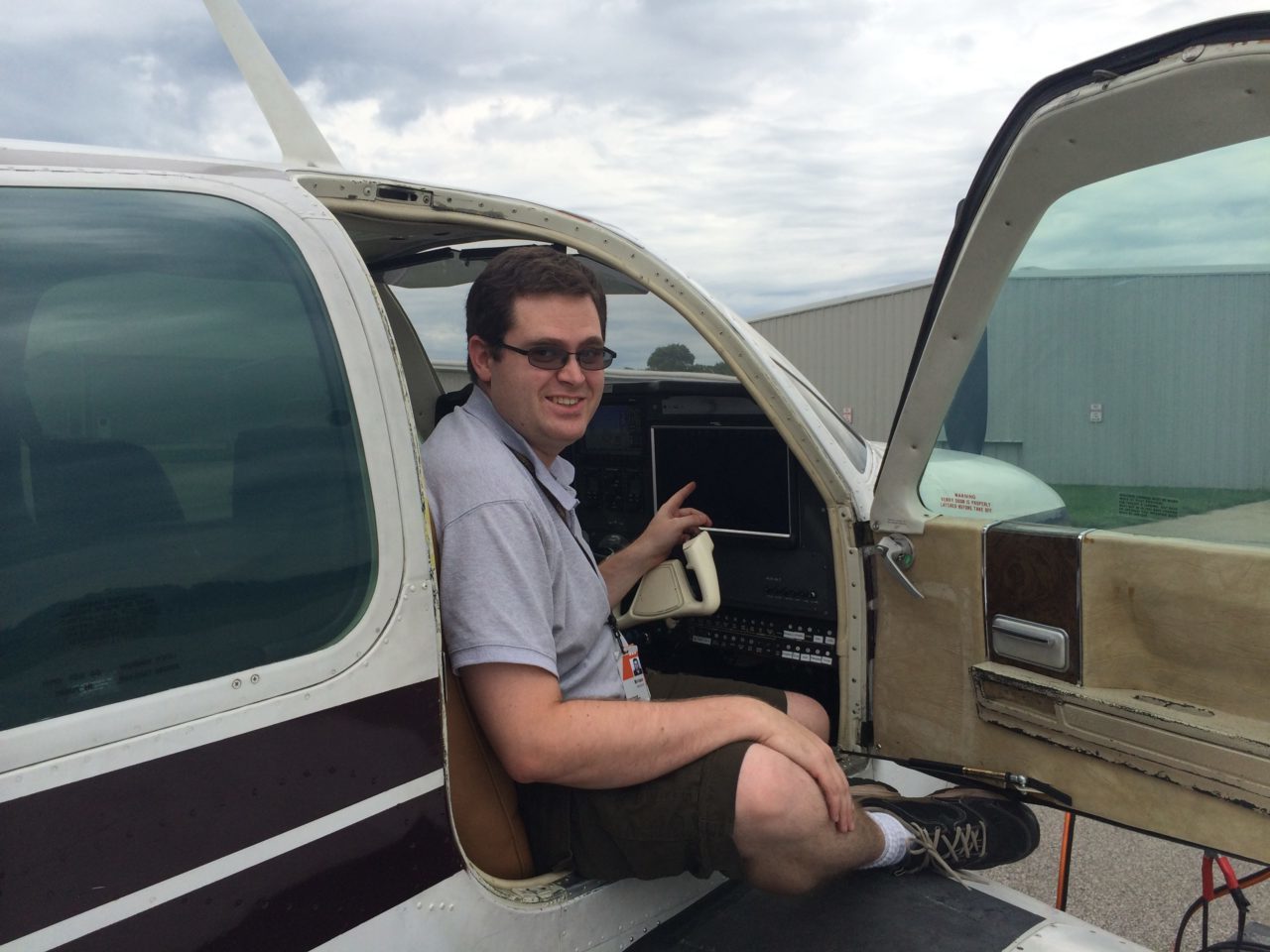
Brian Wolford sitting in the cockpit of a Beechcraft Bonanza which acted as a surrogate UAV for a project at the University of Iowa. Photo courtesy of Rockwell Collins
What do you do outside of work? Do you have any hobbies?
I have three- and a six-year-old, so they take a lot of my time. Even with my kids, I recently got my daughter a little robot and it’s been teaching her how to do some kind of really basic coding. She’s only six, so it’s fun to teach my kids how to use some of the things that I do even though they’re young.
But you know when I do find the time, I have a group of friends here at Rockwell — we enjoy trying to build and fly radio-controlled planes made out of foam board. They are really easy and inexpensive to build, and they also usually have limited cycles, but they are a lot of fun to go out to the park and fly them.
What’s the controlling mechanism like for those? Do you build something from scratch or is it a kit?
There’s a whole community online that comes up with plans for them and then everybody iterates to go create new designs. Most of the control mechanism is just off-the-shelf radio control servos and remote control parts.
So you don’t feel the need to get away from that technology and the engineering to detox and reset your brain?
Ironically, sometimes detoxing is doing an engineering job that is unrelated to work — doing something that is kind of silly and sometimes that’s in our seaplane, sometimes that’s going in and automating something at my house.
On that note, as someone who works with machine learning and AI, how do you feel about the smart-home craze — automation around the house?
I’m kind of all in on that. I’ve been automating lots of things at my home and I think it’s all great technology. I have an app on my phone where I can see the status of whether every window in my house is open or closed! So I think it’s pretty useful stuff and a lot of things that are automatable can be really helpful; I can change my thermostat if I’m a state away.
You love engineering. What about aviation?
I’ve always loved the idea of the freedom of flying. Some people, they go on a trip on an airplane, and they are sad about the seats or whatever it is about aviation — that it isn’t like it used to be. But I go on an airplane and there’s something freeing about just being in the air and being in the sky, and you can’t do that in any other place. I get to do that in my job, and it’s really, really fun to be in a place where I can do something that I always truly enjoy doing.
What do you think that kid would say if he could see what you’re doing now?
I think he’d think it’s pretty cool. Sometimes I just stand back with my job, and I’m very glad that I’ve found a job that gives me the opportunity to do some of the amazing things that I’m able to do.

